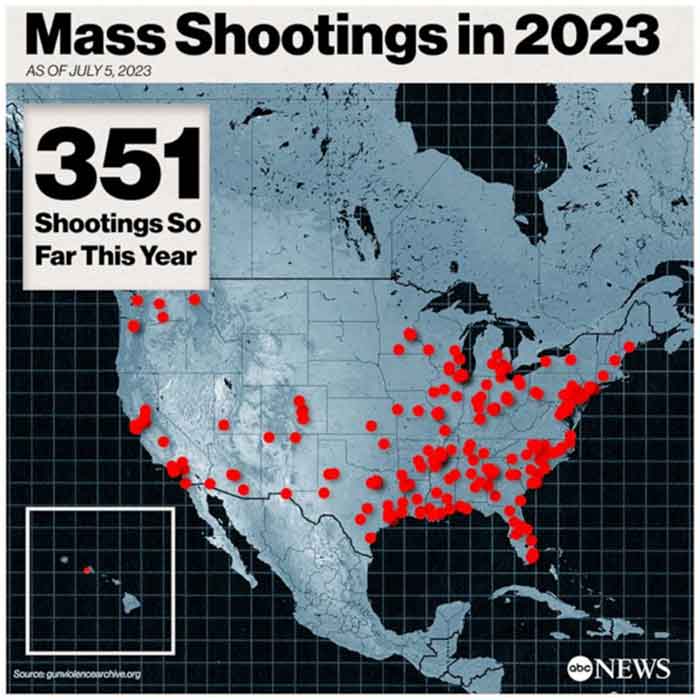
“People like me are not good for big business, like for animal business, medicine business and for many other businesses. That’s why they are discriminating and censoring us.”
Nasim Najafi Aghdam discussing YouTube
She claimed to have detested it, issuing fiery calls on her social media outlets, and asserting that this creature was demonic in its effort to limit talent, expression and the profits of others. Nasim Najafi Aghdam of San Diego spoke with a steely confidence that certitude brings, a self-perceived clarity of thought on such topics as veganism, the right to protest and animal rights.
“For me,” she stridently told the San Diego Union-Tribune at a People for the Ethical Treatment of Animals protest in 2009 outside Camp Pendleton, “animal rights equals human rights.” In Iran, she came to be known as Green Nasim, commanding a certain degree of social media heft.
On Tuesday, that mind of screened clarity manifested itself in a shooting spree at YouTube headquarters. Three were wounded, with the sole death being Aghdam, who took her life after the bloody spray. On Wednesday, San Bruno’s police chief Ed Barberini claimed rather laconically that the suspect was expressing her anger at “the policies and practices of YouTube.”
Prior to that, a point confirmed by a Mountain View police representative, Aghdam had been found sleeping in a car on Tuesday morning. “Our officers made contact with the woman after the licence plate of her vehicle matched that of a missing person out of Southern California. The woman confirmed her identity to us and answered subsequent questions.” Nothing, according to the officers conducting the interview, suggested future intentions.
The attack showed no evident discrimination. There were no set agendas against specific employees, nor was it even clear at first instance whether those wounded were, in fact, employees. What the alleged shooter seemed to see was a ruthless target in the abstract, a brutal tech giant that had betrayed its mission. Aghdam’s father, Ismail Aghdam, warned police that she might well be paying the technology company a visit, so disgruntled was she.
Her personal website spoke of there being “no equal growth opportunity on YouTube or any other video sharing site”. Growth would only take place “if they want you to.” That particular point was stimulated by a change in YouTube policies requiring that individual channels have 1,000 subscribers and 4,000 “watch hours” over the previous twelve months before qualifying to run advertisements. One of Aghdam’s channels sported 1,579 subscribers, but in failing to meet the other threshold requirements, the account was demonetised.
Other restrictions were also the subject of Aghdam’s opprobrium, who attempted over time to build up the image of the technology company as an arbitrary censor. One video she posted received an age restriction. She railed against those “new close-minded YouTube employees [who] got control of my Farsi YouTube last year in 2016 & began filtering my videos to reduce views & suppress & discourage [sic] me from making videos!” The result of imposing such a limit precluded the video from receiving moneys.
So we return to that same problem: the digital frontier, far from flat in its egalitarian access, is vertical, hierarchical in its hold. Power only devolved to the mass community of users in an artificial sense, giving that charming impression that the plebs controlled the production and creation of content.
Community standards are always cited, but these are ultimately set and determined by the particular provider, cajoled in parts, reviled in others. In YouTube’s case, such policies zero in on vulgar language, violence or disturbing imagery, nudity and sexually suggestive content, or videos portraying harmful or dangerous activities.
YouTube, as a provider of content generated by individual users, has found itself in a brutal middle, harried by a range of groups keen to limit or advance particular platforms. The morally righteous and surveillance-minded take issue with its permissiveness, seeking controls over such content as “hate speech”; other individuals find it unduly controlling, limiting engagement, debate and speech.
Last year, its “restricted mode” setting designed to permit libraries, schools and parents filter out content deemed inappropriate to children invariably screened other sources. The videos of gay pop duo Tegan and Sara, fell foul of the provision. Vlogger Calum McSwiggan’s video featuring his coming out display to his grandmother also became the object of digital filtering, while Rowan Ellis would suggest a “bias somewhere within that process of equating LGBT+ with ‘not family friendly’.”
YouTube’s initial response contained a steadfast denial. “The intention of Restricted Mode is to filter out mature content for the tiny subset of users who want a more limited experience. LGBTQ+ videos are available on Restricted Mode, but videos that discuss more sensitive issues may not be.” Experiments by various users testing this claim suggested otherwise.
It its subsequent and hurried note was the tone of a servant to numerous lords, seeking to placate and improve upon previous erring. “We recognise that some videos are incorrectly labelled by our automated system and we realise it’s very important to get this right. We’re working hard to make some improvements.”
These provide cold comforts to those recipients of bullet wounds, and certainly did nothing to calm the disturbed an impassioned Aghdam, self-proclaimed as “the first Persian female vegan bodybuilder.” But again, where the gun is a logical extension of frustrated rights and social impotence, furious redress has come to be an almost reasonable, if predictable expectation.
Dr. Binoy Kampmark was a Commonwealth Scholar at Selwyn College, Cambridge. He lectures at RMIT University, Melbourne. Email: [email protected]











































